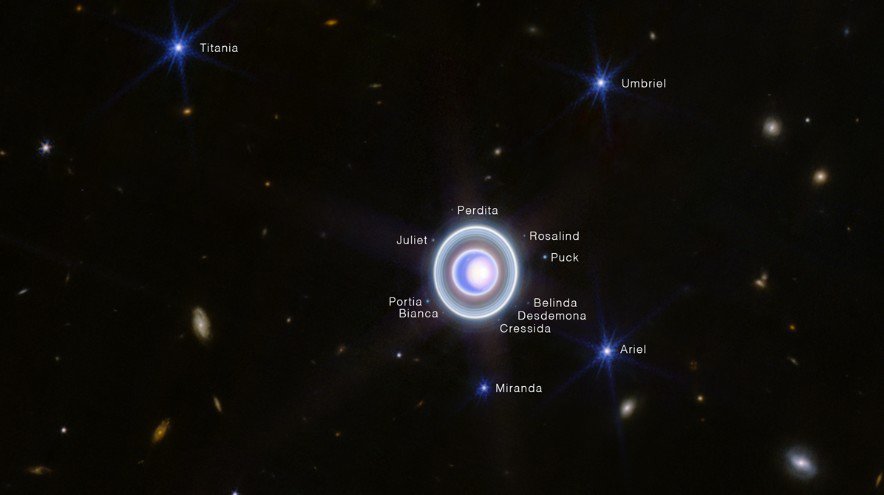New Uranus Photos From NASA Are Out Of This World With Beauty

The James Webb Space Telescope has allowed us to see space and our solar system like never before, and its most recent round of photos are truly stunning. NASA released some high-quality images of Uranus, and they showcase the planet’s many unique features. In these images, you can see rings, moons, storms, polar caps, and much more.
Viewing the images, you can also see storms near the southern border of the cap.
NASA previously released a James Webb Space Telescope image of Uranus earlier this year, but the latest images include more wavelength coverage to give us an even more detailed look at the planet. Perhaps one of the most striking aspects of the pictures are the detailed looks at the planet’s outer and inner rings, including the very faint Zeta ring that is closest to the planet. The incredible sensitivity of the James Webb Space Telescope allows us to see these features that were once much harder to capture.
In addition to the Zeta ring, these images of Uranus also capture numerous moons, with some images showing off some of the smaller moons found within the planet’s rings. The pictures truly capture the imagination and give us a glimpse into this mysterious, icy planet and the unique atmospheric phenomena it produces. Notably, it gives us some images of the seasonal north polar cloud cap, which is much more visible now than in the pictures that Webb captured earlier in the year.

The seasonal north polar cloud cap on Uranus can be seen as a bright, white spot on the planet that darkens as the cap gets closer to the lower latitudes of the planet. While viewing the images, you can also see storms near the southern border of the cap. This has led to the theory that these storms could be brought on by seasonal and meteorological effects.
Since the James Webb Space Telescope began operation in 2021, we have already seen incredible imagery and made observations about space that would have been much more difficult, or impossible, in the past.
As NASA continues to observe Uranus through the James Webb Space Telescope, they will be able to get closer to discerning the seasonal effects on the planet’s atmosphere and how these effects might bring on these storms. Thanks to the incredible sensitivity of the JWST, these observations are much easier to make than they were before. It could lead to some truly interesting discoveries about the planet, along with the other planets that the JWST observes in our solar system.
While Uranus may seem like a pretty inhospitable planet to visit, these observations made through the James Webb Space Telescope will be invaluable for giving scientists data on the seasonal and meteorological phenomena of similar-sized exoplanets.
Additionally, these observations will allow us to better understand the planet itself, so future missions can be planned accordingly. It’ll be interesting to see what other discoveries and observations we can make from these pictures.
Since the James Webb Space Telescope began operation in 2021, we have already seen incredible imagery and made observations about space that would have been much more difficult, or impossible, in the past. It’s a scientific achievement that has continually proved its worth. For now, we’ll just have to wait and see what the James Webb Space Telescope observes next.













